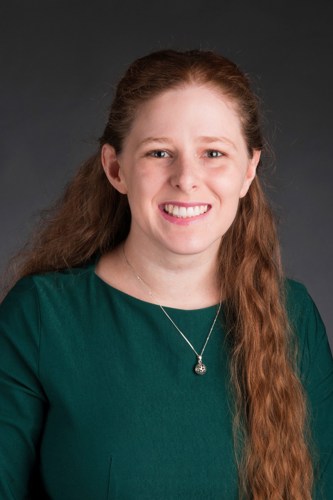 Written by Carly Andrews, Coordinator of Clinical Simulations and Adjunct of Nursing and Health Professions
Written by Carly Andrews, Coordinator of Clinical Simulations and Adjunct of Nursing and Health Professions
Due to the outbreak of the COVID-19 pandemic beginning two years ago, socially-distanced medical services, such as telehealth, have become more prevalent and accessible to the public and across healthcare. This increasing use and accessibility have led the College of Nursing and Health Professions and Clinical Simulation Center to introduce many new education activities into its courses focusing on telehealth care, including the development of new simulations and classroom activities which incorporate telehealth technology, such as the Tyto Home Kits and Vivify Care Kits.
These simulations, sponsored by a grant from USI’s Geriatrics Workforce Enhancement Program received from the Health Resources and Services Administration, utilize a new standardized patient program, allowing students to interact with carefully recruited individuals who take on the role and characteristics of patients, and sometimes a patient’s family members, in order to provide students realistic simulated healthcare experiences. Taking place at the MINKA Learning Lab on USI’s campus, these simulations combine multiple disciplines, including occupational therapy, social work, nursing and health administration, which encourages interprofessional education. Telehealth technology also enables the college to invite expert guests from the community to virtually contribute during these simulations, allowing students to experience the process of assisting a patient or resident with a telehealth visit or family call while maintaining focus on the initial purpose of the visit.
In addition to the above interprofessional simulations in the Minka Learning Lab, the College of Nursing and Health Professions provides online telehealth clinical simulations for the nursing program in addition to its traditional in-person simulations.
The first telehealth simulation successfully administered was a pediatric care-centered simulation with faculty or guests acting as parents and patients checking in for a telehealth appointment. During these simulations, nursing students conduct intake assessments as they would in a clinical environment. Unable to touch the patient, students learn to rely solely on their ability to converse with the patient or the patient's parent and ask the correct questions to gain the most pertinent information relevant to the case.
The success of both simulation programs was the cornerstone for the development of a mental health telehealth simulation that has also seen positive feedback.
As healthcare technology continues to advance, the Clinical Simulation Center and its partners will continue to develop more simulations focusing on telehealth to meet the learning needs of our students.

